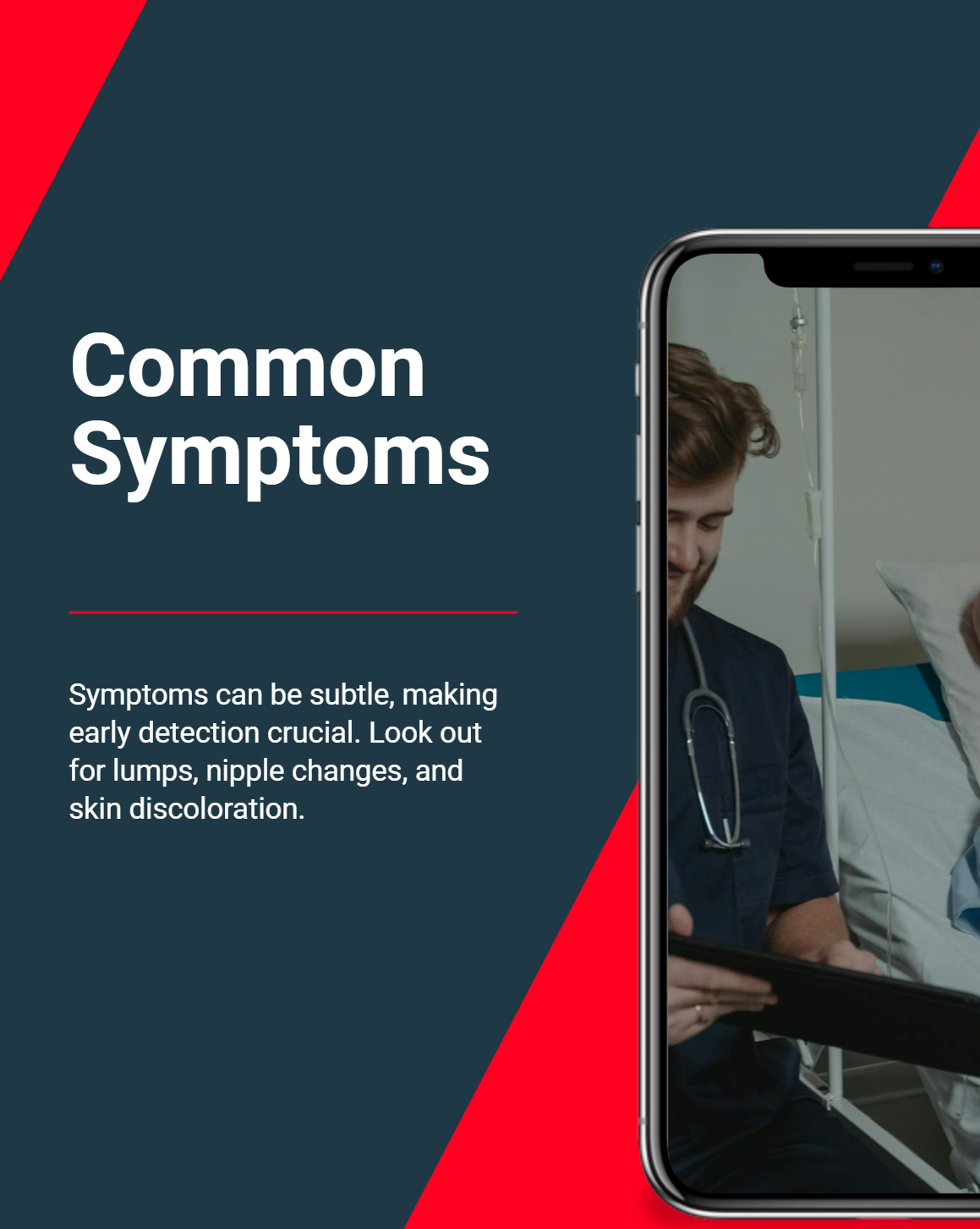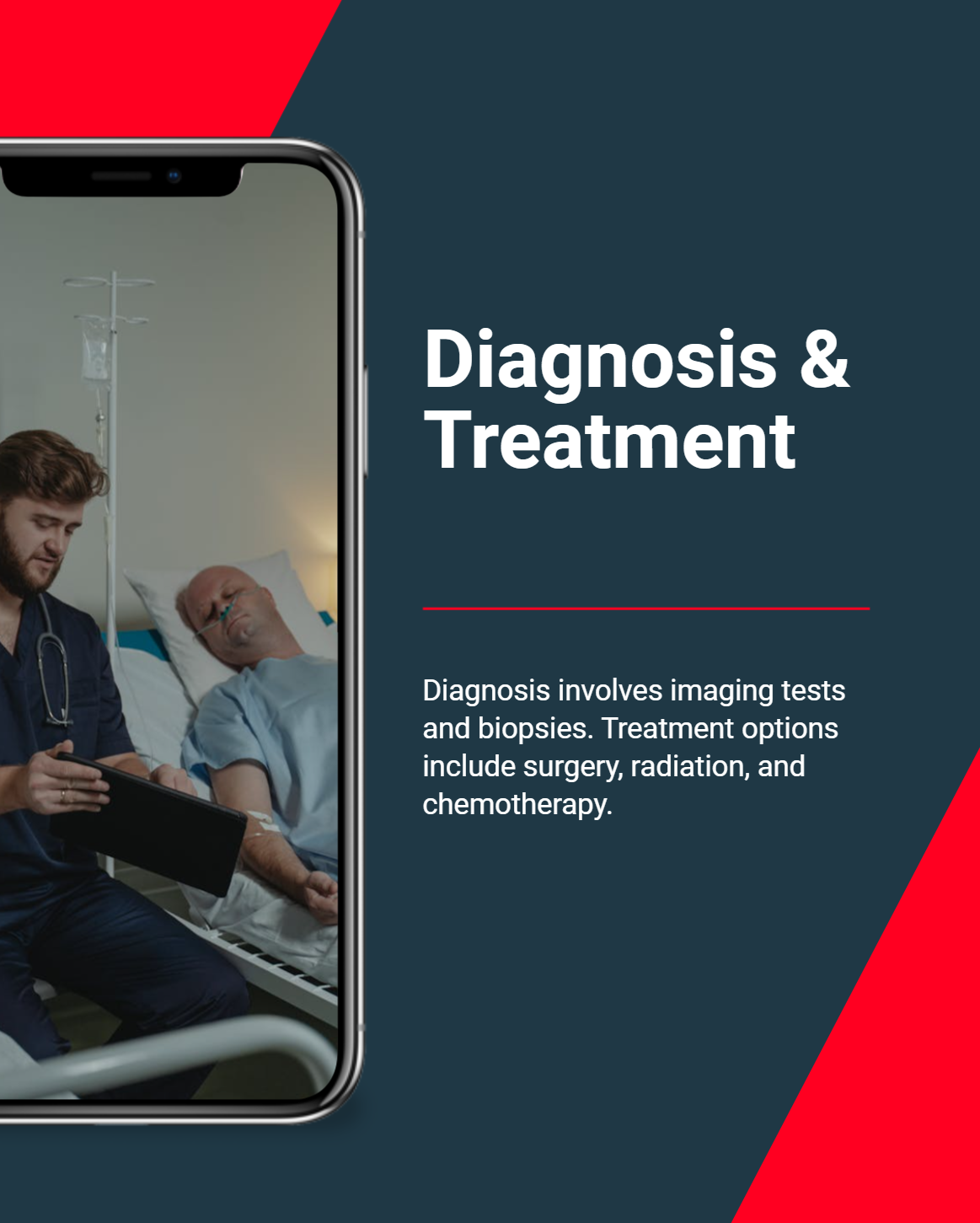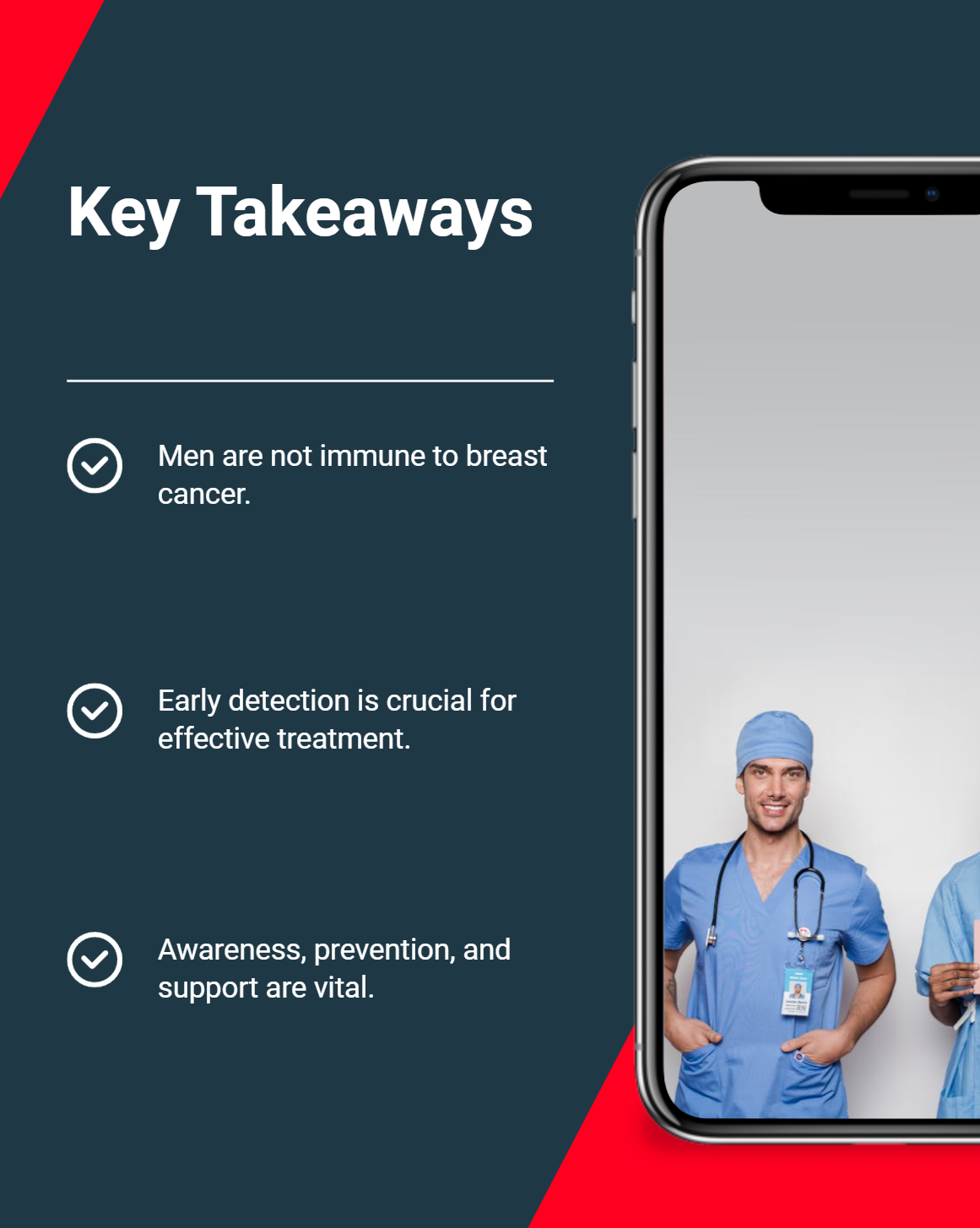Breast cancer is often regarded as a women’s health issue, but it is not exclusively so. While the vast majority of breast cancer cases occur in women, men can also develop the disease. Unfortunately, the stigma and lack of awareness surrounding male breast cancer can lead to delayed diagnoses and poorer outcomes. It’s time we dismantle the misconception that breast cancer is only a woman’s issue and recognize its impact on men as well.
Breast cancer in men is rare but still possible. Although men have much less breast tissue than women, cancerous cells can still develop there. While the lifetime risk for men is significantly lower—about 1 in 833 compared to 1 in 8 for women—it’s important to remember that men are not immune to the disease.

Hormonal Imbalances
One of the primary drivers of breast cancer in men is hormonal imbalances. Elevated levels of estrogen, whether due to medical conditions or certain medications, can increase a man's risk.
Genetic Mutations
Genetic factors, especially mutations in the BRCA1 and BRCA2 genes, play a significant role. Men with these mutations have a higher likelihood of developing breast cancer, as well as other cancers.
Lifestyle and Environmental Factors
Factors like obesity, alcohol consumption, and exposure to radiation can elevate a man's risk. Maintaining a healthy lifestyle is crucial for reducing this risk.

The symptoms of breast cancer in men are similar to those in women, though often overlooked.
Key Symptoms to Watch For
Early detection is critical, yet many men delay seeking medical attention due to a lack of awareness or fear of stigma.

How is Breast Cancer Diagnosed in Men?
Diagnosing breast cancer in men involves:
Treatment Options
Treatment depends on the stage of cancer and may include:
Breaking the Stigma
The misconception that breast cancer only affects women leads to the underrepresentation of male breast cancer in campaigns, research, and funding. This contributes to late diagnoses and worse outcomes for men.
Encouraging Conversations
Discussing breast cancer openly can save lives. Men should feel empowered to seek medical advice without fear of judgment. Early detection is the key to effective treatment.

Regular Screenings for High-Risk Individuals
Men with a family history of breast cancer or known genetic mutations should undergo regular screenings. Genetic counseling can also provide valuable insights.
Adopting a Healthy Lifestyle
Simple changes can lower the risk:
Being Proactive About Health
Men should not ignore unusual changes in their bodies. Acting quickly on potential symptoms can make all the difference.
Hearing from survivors can be a powerful reminder that men can overcome breast cancer. Their journeys shed light on the importance of early detection and the strength of community support.
Support Awareness Campaigns
Promoting inclusive awareness campaigns that highlight male breast cancer can help dismantle stereotypes and encourage men to take their health seriously.
Advocate for Research Funding
Increased funding for research into male breast cancer is essential to understanding the disease better and improving treatment outcomes.
Educate Healthcare Providers
Doctors and nurses should be equipped to recognize and address male breast cancer, ensuring that men receive timely diagnoses and care.

Breast cancer doesn’t discriminate—it can affect anyone, regardless of gender. While male breast cancer is rare, it is no less serious. Raising awareness, breaking stigmas, and encouraging men to prioritize their health are critical steps in addressing this issue. Together, we can ensure that no one feels alone in their fight against breast cancer.
Breast cancer in men is rare, accounting for less than 1% of all breast cancer cases. However, it is still a serious condition that requires attention and awareness.
Yes, risk factors include genetic mutations (BRCA1 and BRCA2), high estrogen levels, obesity, family history, and exposure to radiation.
Yes, men can have mammograms if they experience symptoms like a breast lump or nipple changes. It is a vital diagnostic tool.
Men can reduce their risk by maintaining a healthy weight, limiting alcohol consumption, staying physically active, and monitoring their family health history.
If a man notices a lump or any other unusual changes in his breast area, he should consult a doctor immediately. Early detection can significantly improve treatment outcomes.
 18.02.2025
18.02.2025